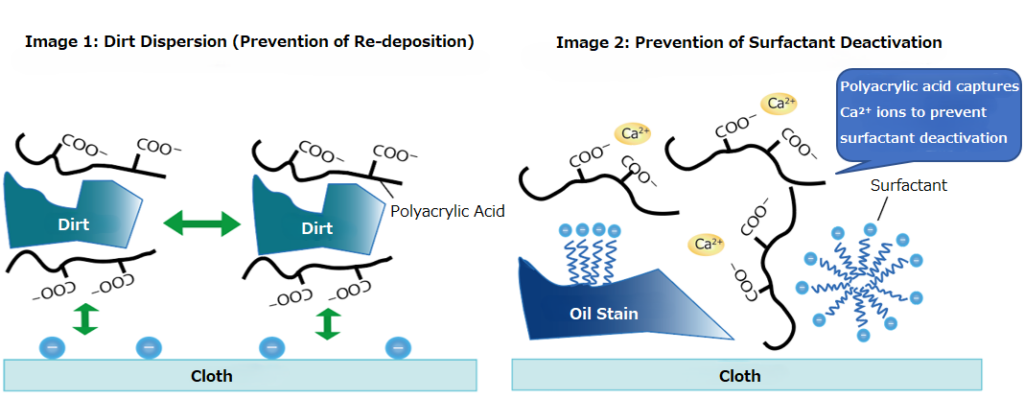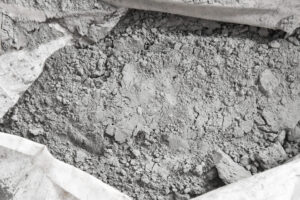Typical Applications of Polyacrylic Acid/Sodium Polyacrylate
Thickening Agents
It exhibits the highest thickening effect in the alkaline region around pH 10, and shows thickening performance even at lower concentrations compared to guar gum or CMC. A notable feature is its stable viscosity against temperature changes.
Furthermore, aqueous solutions of polyacrylic acid and sodium polyacrylate exhibit properties close to Newtonian fluids in the viscosity range typically used, meaning that their viscosity does not change with shear rate and remains nearly constant.
▼ Watch the introductory video on thickening applications below.
Food Additives / Feed Additives
High molecular weight sodium polyacrylate is widely used in various products as a food additive and feed additive. Products from Nippon Shokubai have a long track record of use as food-grade and feed-grade additives. The usage standard for food is less than 0.2% by weight.
Due to its water retention and thickening properties in aqueous solutions, it has been widely used in noodles, processed foods, and frozen foods.
It is known to enhance the adhesive strength of proteins in powdered raw materials and to retain water effectively (water-holding capacity), helping to evenly maintain moisture in dough and prevent drying.
It is also used as a binder in fish feed (moist pellets).

Builder (Detergent Aid)
Sodium polyacrylate is used as a builder (detergent aid) in powdered detergents for clothing and dishwashing.
It enhances cleaning performance through multiple functions: loosening mud stains, encapsulating dirt to prevent it from reattaching to clothes or dishes, and capturing calcium and magnesium ions to prevent the deactivation of surfactants. These combined actions make it an effective detergent aid.

Other Various Applications
Pharmaceuticals / Daily Necessities
When dissolved in water, sodium polyacrylate exhibits strong thickening properties, making it suitable for use in poultices and cooling sheets. It is also characterized by excellent thermal stability.

Textile Processing
Used as a chelating agent and anti-redeposition agent during scouring and bleaching processes.

Paints
Functions as a dispersant for paint pigments by adsorbing onto pigment surfaces and utilizing electrostatic repulsion between pigment particles.

Civil Engineering and Construction Applications
Used as an additive for drilling and as a retarder to slow down the curing of cement.
